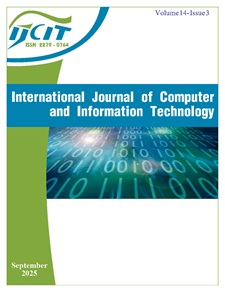Development of an NFC-Based Tracking System for Production, Inventory, and Maintenance in Manufacturing
DOI:
https://doi.org/10.24203/szrcag71Keywords:
NFC, Production Control, Inventory Management, Industry 4.0, Circular EconomyAbstract
This paper presents the development, implementation, and evaluation of a computational system for integrating production control, inventory management, and maintenance operations in a manufacturing company using Near Field Communication (NFC) technology. The proposed solution leverages NFC tags as a core element to ensure real-time tracking of products and components throughout the manufacturing process. The system architecture consists of NFC tags for product identification, a custom mobile application for data acquisition, and a centralized database for storage and analysis. The system workflow enables operators to register, monitor, and update the status of products using mobile devices, enhancing traceability, efficiency, and data accuracy. The solution was validated in a real-world manufacturing environment through functional tests and a System Usability Scale (SUS) questionnaire, which yielded an average usability score of 72.08, indicating a good level of user satisfaction. These results demonstrate the feasibility, usability, and practical benefits of the proposed system, which contributes to the digital transformation of industrial operations and aligns with Industry 4.0 principles.
References
[1] N. Freitas, A. D. Rocha, and J. Barata, "Data management in industry: concepts, systematic review and future directions," J. Intell. Manuf., 2025.
[2] V. Coskun, B. Ozdenizci, and K. Ok, "The Survey on Near Field Communication," Sensors, vol. 15, no. 6, pp. 13348–13405, 2015.
[3] L. Gegeckienė et al., "Near Field Communication (NFC) technology in the packaging industry," 2022.
[4] P. Escobedo et al., "Flexible Strain Sensor with NFC Tag for Food Packaging," in IEEE Int. Conf. Flexible and Printable Sensors and Systems (FLEPS), 2020.
[5] X. Sun et al., "Wearable Near-Field Communication Sensors for Healthcare: Materials, Fabrication and Application," Micromachines, vol. 13, p. 784, 2022.
[6] S. Đurđević et al., "NFC Technology and Augmented Reality in Smart Packaging," Int. Circular Graph. Educ. Res., vol. 11, 2018.
[7] Y. Yu et al., "Circular economy in the construction industry: A review of decision support tools based on information and communication technologies," J. Clean. Prod., vol. 349, p. 131335, 2022.
[8] N. Kasim et al., "Potential implementation of near field communication technology for improving material tracking at construction site," IOP Conf. Ser.: Earth Environ. Sci., vol. 1467, 2025.
[9] P. Lathiya and J. Wang, "Near-Field Communications (NFC) for Wireless Power Transfer (WPT): An Overview," in Wireless Power Transfer – Recent Development, Applications and New Perspectives, IntechOpen, 2024.
[10] H. Du, “NFC technology: Today and tomorrow,” Int. J. Future Comput. Commun., vol. 2, no. 4, pp. 351, 2013.
[11] L. M. Oliveri, D. D’Urso, N. Trapani, and F. Chiacchio, “An NFC application for the process mapping automation for SMEs,” Procedia Computer Science, vol. 232, pp. 298–307, 2024. doi: 10.1016/j.procs.2024.01.029.
[12] A. Lázaro, R. Villarino, and D. Girbau, “A Survey of NFC Sensors Based on Energy Harvesting for IoT Applications,” Sensors, vol. 18, no. 11, p. 3746, Nov. 2018.
[13] T. M. Fernández-Caramés and P. Fraga-Lamas, “A Review on Human-Centered IoT-Connected Smart Labels for the Industry 4.0,” IEEE Access, vol. 6, pp. 25939–25957, 2018.
[14] J. Karpavičė, I. A. Hafith, T. Tambo, F. Chinello, I. Venyte, and L. Gegeckienė, “Experimental approaches to NFC-enabled packaging for UX/CX of physical artefacts: A technology maturity study,” Procedia Computer Science, vol. 219, pp. 577–585, 2023.
Downloads
Published
Issue
Section
License
Copyright (c) 2025 Camile L. F. de Macedo, Flavio Cezar Amate

This work is licensed under a Creative Commons Attribution-NonCommercial 4.0 International License.
The articles published in International Journal of Computer and Information Technology (IJCIT) is licensed under a Creative Commons Attribution-NonCommercial 4.0 International License.


